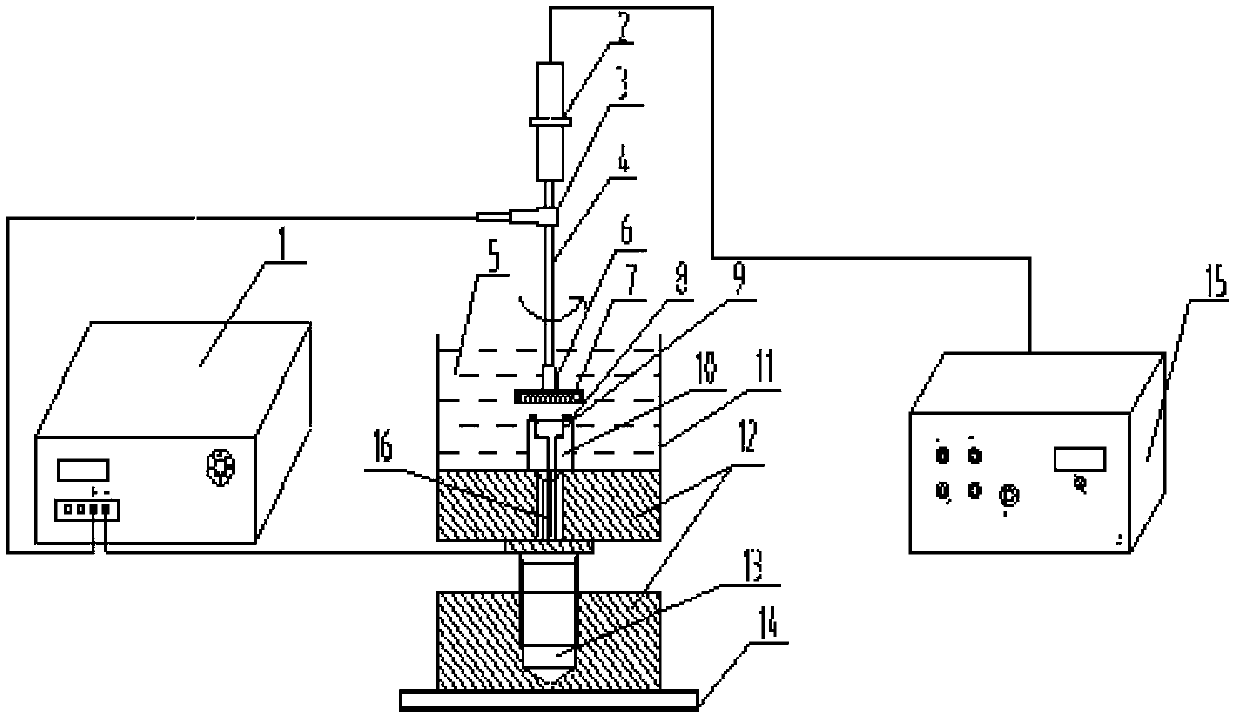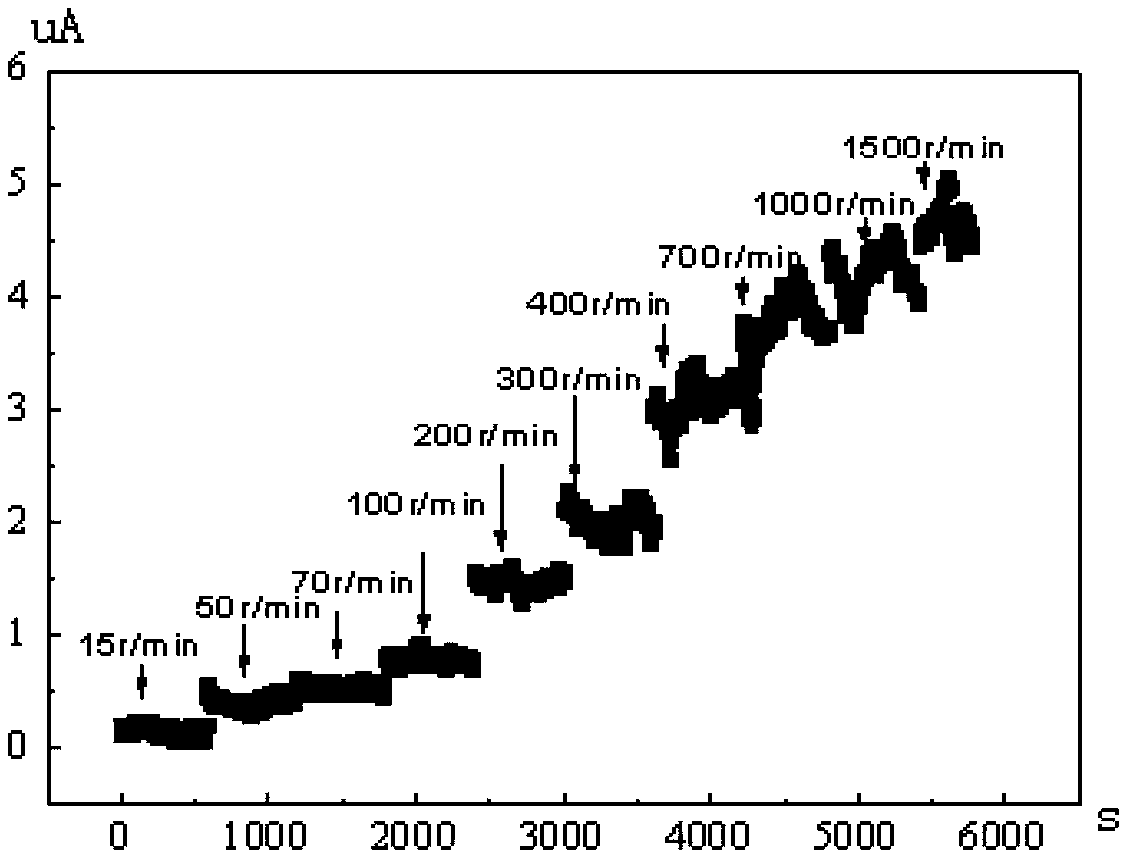In order to prevent local corrosion damage caused by dynamic galvanic corrosion, it is very necessary to study the behavior and law of dynamic galvanic corrosion, and take effective control measures for its corrosion characteristics; most of the galvanic corrosion tests in the existing laboratories are based on
National standard GB / T15748-1995 "
Galvanic corrosion test method for marine
metal materials", in this standard, the corrosion medium is static sea water, the
sample area is 1:1 static suspension, the operation method is simple, easy to implement, and the
test data is stable , but the
disadvantage is that it cannot simulate the flowing
seawater environment, nor can it simulate the mutual friction motion of dissimilar metals. In practice, the
seawater erosion environment is much more serious than the static
seawater corrosion, and the mutual friction between dissimilar metals will also accelerate galvanic corrosion, so The experimental data obtained from static seawater is difficult to truly reflect the true tendency and degree of galvanic corrosion between materials
[0003] Most of the existing technologies are aimed at dynamic friction and
wear corrosion and galvanic corrosion respectively. For dynamic friction and
wear corrosion, there are generally two test methods:
erosion and abrasion. The test methods for simulating seawater
erosion include rotary erosion,
pipe flow erosion, and jet erosion. etc. For example, the "
Pipe-flow Liquid-
Solid Two-phase Flow
Erosion Corrosion Experimental Device" disclosed in Chinese Invention Patent No. 00253528.9 introduces a
pipe-flow type erosion
simulation corrosion test device, which provides a method for research or measurement under high flow rate conditions. The influence of the distribution of the local flow velocity and state of the fluid and the movement characteristics of the particles near the
pipe wall on the erosion and corrosion of materials; the "jet-type liquid-
solid two-phase flow erosion and corrosion experimental device" disclosed in the Chinese Invention Patent No. 200720014413. Real-time measurement of long-term electrochemical parameters under different flow rates, spray angles and medium temperatures; the "multifunctional submerged spray
cavitation test device" disclosed in the Chinese invention patent No. 200810249618.6 realizes the
simulation of
material erosion under different pressure environments Measurement of corrosion performance, such as electrochemical measurement of materials under different
cavitation intensities; Chinese invention patent No. 201010603782. The advantages of the
erosion corrosion experimental device are that it can simulate the axial
erosion corrosion of the inner wall of the pipeline under rotating conditions, and at the same
time control the flow rate, medium composition and temperature, as well as real-time electrochemical measurement and
weight loss measurement; in practice, for the test method of simulating material wear, At present, there is no recognized evaluation method for the reliability of corrosion and wear
test equipment. The existing corrosion and wear
test equipment at home and abroad are all designed and manufactured by researchers according to their own research purposes. There is no finalized corrosion and
wear testing machine, such as The Chinese invention patent No. 201110207373.2 discloses "a high-temperature and high-pressure in-situ scratch and corrosion wear test device" mainly introduces a high-temperature and high-pressure in-situ scratch corrosion wear test device, which can realize the surface of the sample under high temperature and
high pressure. In-situ single scratch and reciprocating corrosion wear research, and can detect the process of sample
surface film from destruction to repassivation during the process of scratch or corrosion wear on the surface of the sample
In addition, there are currently many invention patents for galvanic corrosion. For example, a "multi-channel galvanic corrosion experiment
data acquisition device" disclosed in the invention patent No. 200420098658.2 introduces a
fully automatic multi-channel intelligent acquisition and
processing The galvanic corrosion
test data acquisition device of the data can measure the galvanic
corrosion potential and current of multiple sets of galvanic couples in situ at the same time, the
data acquisition is accurate, the efficiency is high, and a lot of manpower and financial resources are saved; the Chinese invention patent No. 200910238567.1 is disclosed "A galvanic corrosion test device" introduces a method for any two different metal materials containing CO 2 / H 2 The galvanic corrosion
measurement device in the solution medium of S, which can carry out the galvanic corrosion test device with the same
yin and yang area and different
area ratio changes, and can also perform high temperature and
high pressure galvanic corrosion immersion
weight loss tests with different area ratios; the above patents None of the technologies has realized the effective combination of dynamic friction and
wear corrosion and galvanic corrosion
In addition, there is a Chinese invention patent No. 201010225412 which discloses "a test method for simulating galvanic corrosion in a seawater scouring environment". This invention combines galvanic corrosion and dynamic friction and wear corrosion, and can realize galvanic corrosion in a simulated seawater scouring environment However, the method introduced in this patent cannot realize the
simulation of the working conditions of mutual friction and wear between metals, and in the technical field of galvanic corrosion of metal materials, there is
no reference to the friction of
dissimilar metal materials under the environmental conditions of flowing seawater (or other corrosive media). There are no identical or similar technical records or literature reports, so it is sought to design a simple, fast and accurate dynamic galvanic corrosion test device for dissimilar metals in flowing seawater or other corrosive medium environments. The galvanic corrosion test in the process of mutual movement or friction has good scientific research significance and practical value
 Login to View More
Login to View More  Login to View More
Login to View More 

